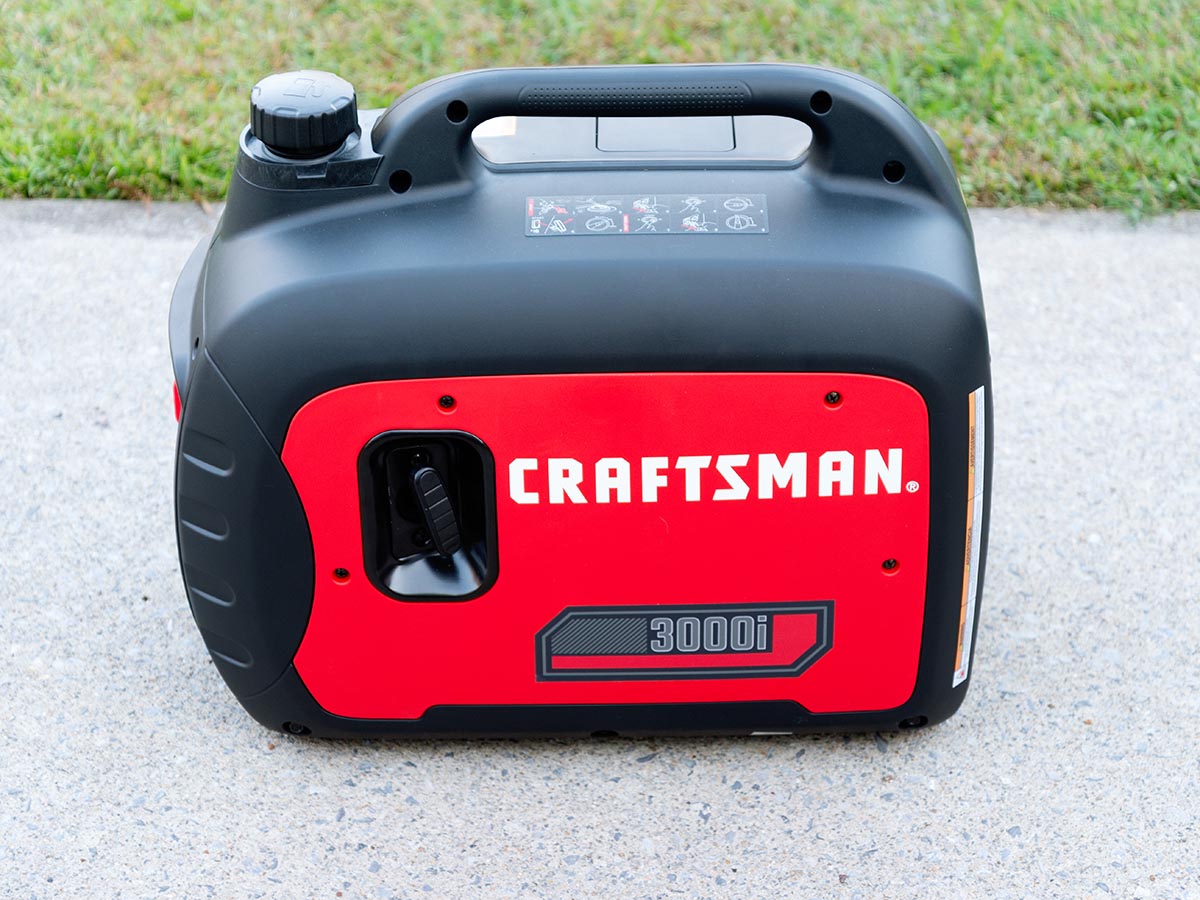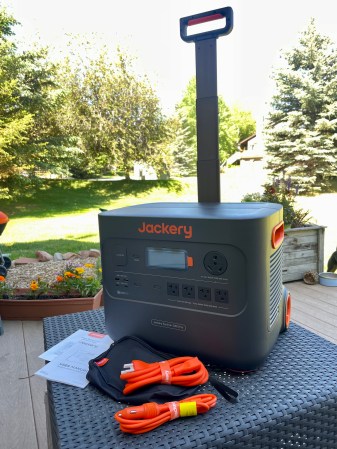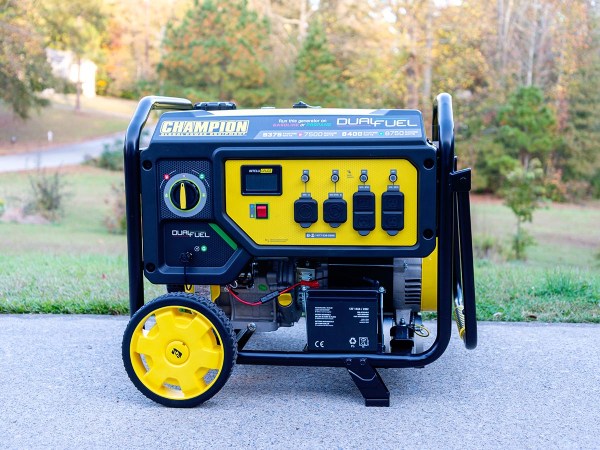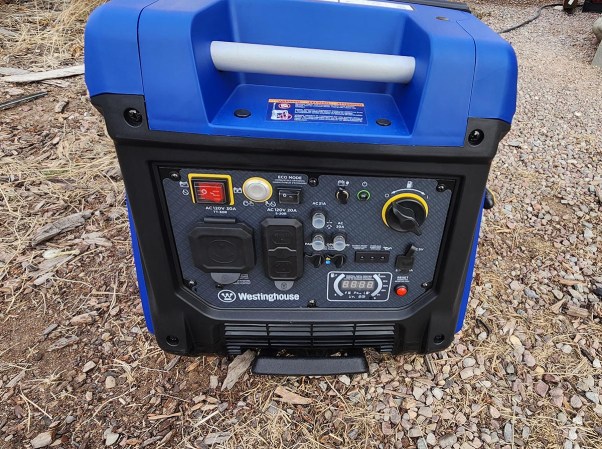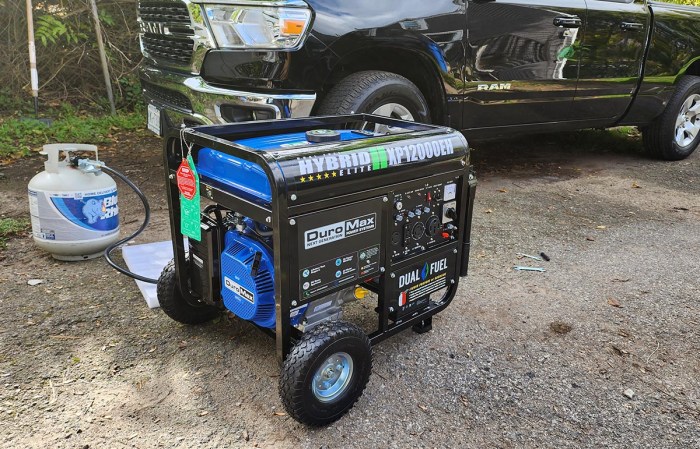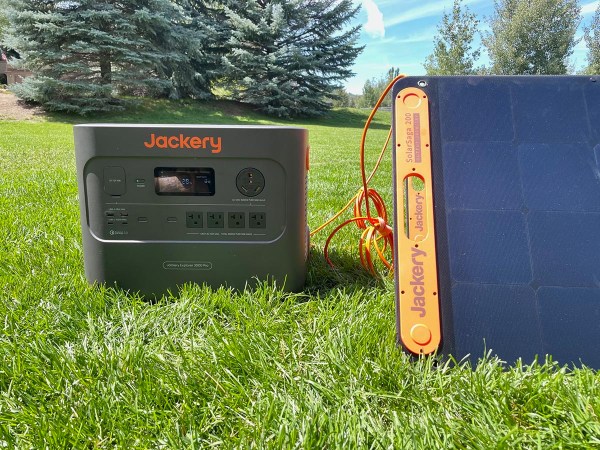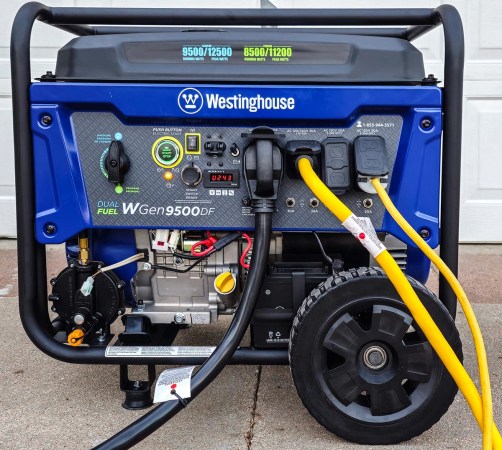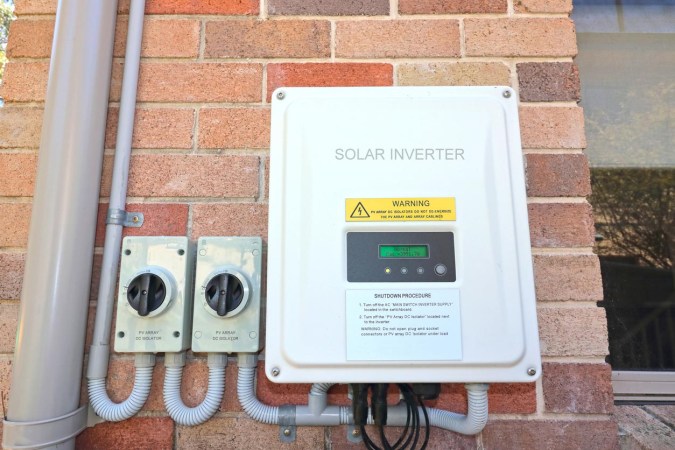We may earn revenue from the products available on this page and participate in affiliate programs. Learn More ›
When it comes to portable power solutions, quiet inverter generators are tough to beat. Even though inverter generators are more expensive than traditional portable generators, the payoff comes in the form of quieter operation, better fuel economy, and a clean electrical current free from spikes and drops in voltage. These qualities make inverter generators the best choice for camping and other noise-sensitive settings, as well as for safely powering sensitive electronic devices.
Craftsman’s tools have been a trusted staple among DIYers for over a century, so I decided to test a Craftsman generator for this review. I spent a week using the Craftsman CMXGIAC3000 3,000-watt inverter generator to run my small RV. I also used it as a power source for construction tools on a remote building project. In this review, I will share the pros and cons of owning this Craftsman generator, my observations from working with it, and why I recommend buying it or not depending on one’s specific power supply needs.
Craftsman CMXGIAC3000 3,000-Watt Inverter Generator: At a Glance
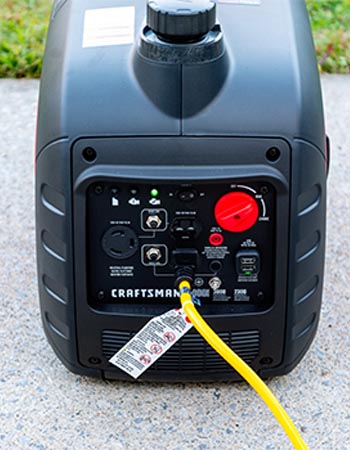
Rating: 8.9/10
SPECS
- Fuel source: Gasoline
- Starter type: Recoil
- Running wattage: 2,300 watts
- Starting wattage: 3,000 watts
- Runtime: 4.5 hours per tank of gas
- Weight: 59.5 pounds
- Noise level: Less than 60 decibels
PROS
- Fuel-efficient and California Air Resources Board (CARB)-compliant off-grid power generation
- Extremely low noise levels won’t disturb the neighbors in camp
- Lightweight, compact build makes it easy to bring along for camping, tailgating, or remote work
- Intuitive and easy to start with a single choke/run/off selector and recoil starter cord
- Assortment of built-in power outlets supports a wide variety of electrical needs
- Parallel-ready wiring allows users to “stack” multiple generators to increase output
CONS
- Modest output; may not supply enough electricity for large campers or high-use construction projects
- Single fuel option is less convenient than dual fuel in some settings
Get the Craftsman inverter generator at Amazon for $597.75.
What is the Craftsman 3,000-watt inverter generator?
The Craftsman 3,000-watt inverter generator is a quiet and compact unit built for light- to medium-duty portable use. The 80 cubic centimeter gas engine produces 2,300 running watts and up to 3,000 surge watts when needed for high-demand appliances, such as for an RV air conditioner or a portable table saw. Measuring 18 inches high by 22 inches long by 13 inches wide, this wheelless unit can fit into the back of a truck, even one loaded with camping gear or tools. It features a molded carry handle and weighs 59.5 pounds.
As an inverter generator, the Craftsman CMXGIAC3000 runs very quietly, lower than 60 decibels at maximum capacity, while producing an electrical current that is free of voltage spikes and drops. It has a 1-gallon gas tank that provides 4.5 hours of runtime per fill-up when operating at a 50 percent load. It can also be parallel wired with a second inverter generator for twice the power production, though the parallel cable kit is sold separately.
The CMXGIAC3000 has a single control knob for off/run/choke, and it starts up with a tug of the pull cord. The economy-mode switch allows users to conserve fuel during extended idle periods or increase standby power to meet a higher electrical demand. Power outlets include one (L5-30R) locking 30-amp 120-volt receptacle; two ground-fault circuit interrupter (GFCI)-protected (5-20R) 20-amp 120-volt receptacles; and two 1-amp/2.1-amp 5-volt USB ports.
The brand-new unit arrived ready to use with no assembly required. I unpacked the box, added oil and gas, and followed the manufacturer’s instructions for the initial start-up before testing it. Since there were no instructions regarding a break-in period, I followed procedures similar to those I’ve used with other brand-new generators: allow the inverter generator to run through a full tank of fuel, varying between 0 and 50 percent maximum load, and then change the oil. After I did this, I tested it by powering my camper for a weekend, and then I used it as a power source for tools on a small DIY project in my backyard.
Overall, the Craftsman CMXGIAC3000 inverter generator performed well; operated extremely quietly; and was easy to operate, transport, and store. But it did face some limitations under higher electrical demand, as expected. It powered the small appliances in my camper, but running both the air conditioner and refrigerator simultaneously brought it to the limit of its capabilities. It allowed my friend and me to alternate seamlessly between a table saw, miter saw, air compressor, and router on the construction project, but it was only capable of powering two or three tools at the same time.
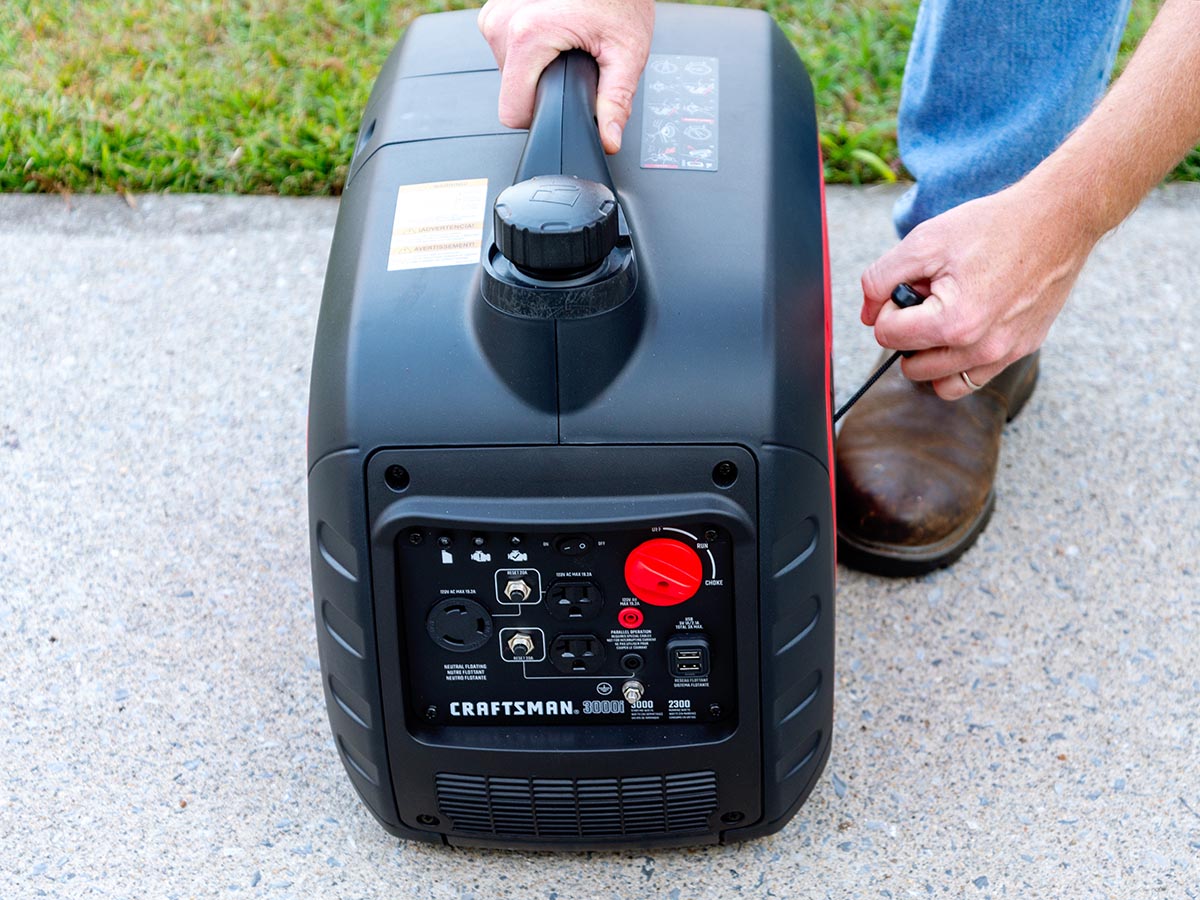
Easy to Operate
Even though the Craftsman does not come equipped with an electric start button, starting it was still pretty easy. The engine consistently started on the first pull of the recoil cord every time throughout my testing. I also liked that the choke control is integrated with the on/off switch in a convenient position on the unit’s front panel. Other portable generators are often equipped with three different controllers for on/off, fuel valve, and choke lever, typically separated on different parts of the generator, so this was a welcome upgrade.
All of the controls, outlets, and indicator lights are thoughtfully situated on the front panel. An indicator light on top of the generator illuminates whenever the generator is operating, and warning lights are included to indicate that the oil level is low or that the unit is overloaded. The GFCI reset buttons are positioned beside their respective outlets in the center of the panel, and the USB ports are off to the side where the cords won’t get tangled with larger power cords. Everything is clearly labeled.
The 30-amp outlet on the generator was not directly compatible with my TT-30P camper plug, so I bought an adapter that worked perfectly. When I was running my saws and air compressor off the generator, I plugged 12-gauge extension cords into both of the 20-amp GFCI outlets and swapped the cords between the tools as needed. This was less convenient than having dedicated outlets for each tool, but it avoided overloading the generator with too many devices. I could have purchased a three-way convenience extension cord to plug into the generator’s 30-amp outlet, which would have increased the number of household-style outlets to five, but I opted to use what I had on hand.
The generator has an “Economy” mode (also known as Eco mode) that can be switched on as desired. I used Economy mode to conserve fuel when the generator would be idling for long periods with intermittent power draw, such as when it was powering the camper or the air compressor. When I needed consistent or frequent power to run the table saw or router, I switched off Economy mode.
Powers Various Combinations of Tools/Appliances
To keep things running properly with a generator, it’s essential to avoid overloading the unit. Bear in mind the combined running watts for all plugged-in devices as well as the sum of the highest surge watts required from those devices. Using adapters to add outlets does not increase the generator’s power output, and it could lead to overloading the generator.
With 2,300 running watts and 3,000 surge watts, this generator can power various combinations of tools and appliances. In my camping and construction tests, I used it to power the following device combinations:
- RV air conditioner (isolated)
- RV microwave, refrigerator, and wall outlets
- RV microwave, air conditioner, and wall outlets (refrigerator switched to propane)
- Portable table saw, miter saw
- Portable table saw, pancake air compressor
- Portable table saw, router
Is the Craftsman 3,000-Watt Inverter Generator worth the money?
The Craftsman 3,000-watt inverter generator is a reliable option for shoppers who value portability, easy starting, and quiet operation in a compact generator. This streamlined unit offers the necessary power generation without the feature upgrades that add to the cost as well as the convenience. Its regular price is under $950 at Amazon, which seems to be a fair value. Some similarly equipped models from other brands, like the Generac 7129 GP3000i, can be found for a little bit cheaper.
Those in search of a premium generator with comparable power output and fuel economy with a longer runtime might prefer the Honda EU3000iS inverter generator. It supplies 2,800 running watts and 3,000 surge watts with a noise range between 49 and 57 decibels. In Eco mode, it can run for up to 20 hours per tank or 10 hours at 50 percent load, and it comes equipped with an electric starting system. But the improved runtime and sophisticated features result in a price of around $2,400.
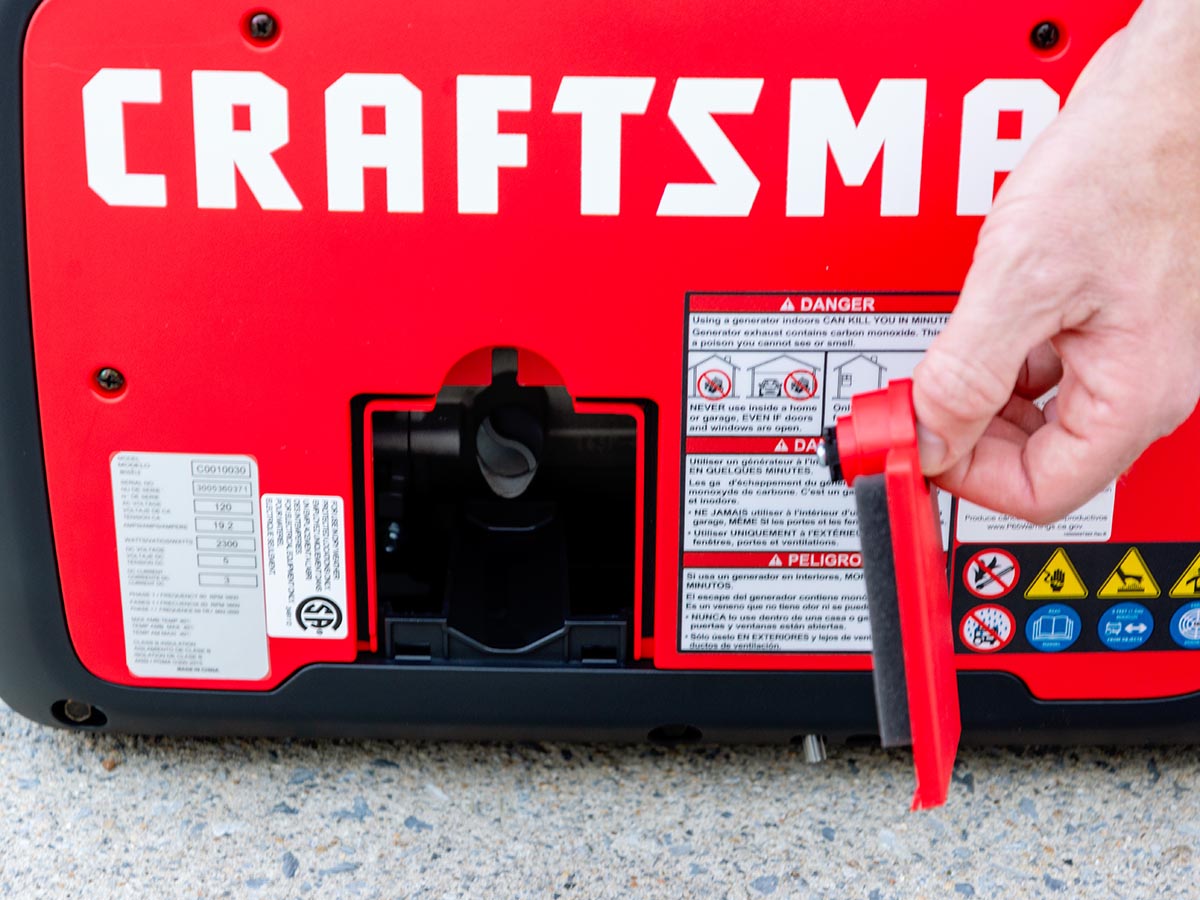
Should you buy the Craftsman 3,000-watt inverter generator?
As much as I appreciated the compact size, quiet engine, and no-frills operation, this is not the portable power solution for everyone. The small tank only provides about 4.5 hours of runtime per fill-up when it’s running at 50 percent load, so it may not be adequate to keep an RV air conditioner running through a hot summer night. Also, since it generates just 2,300 running watts and 3,000 starting watts, builders will be limited to using two or three tools at a time. But for less demanding applications, this little generator provides just enough electricity while making more efficient use of fuel compared to larger portable generators. And its compatibility with parallel wiring allows users to add a second Craftsman CMXGIAC3000 for double the electricity output when needed.
Campers, tailgaters, builders, and DIYers can do a lot with a little bit of electricity. The Craftsman 3,000-watt inverter generator may not be the right choice to back up a whole house during storm outages, but it does offer plenty of power to supply a few tools or small appliances. The compact size and relatively lightweight build made it easy to pack in my truck with other gear, and it was simple to carry to the project site. Start-up was a cinch, runtime was adequate, noise levels were minimal, and it allowed me to run two or three devices at the same time. If that sounds like something you need, then this could be a great choice.
Where to Buy the Craftsman 3,000-Watt Inverter Generator
Get the Craftsman inverter generator at Amazon for $597.75.
Meet the Tester
Mark Wolfe is a writer and product tester with an extensive background in the nursery and landscaping industry. For more than 20 years he mowed, edged, planted, pruned, cultivated, irrigated, and renovated beautiful landscapes. Now he tests and writes reviews about the latest outdoor power equipment, hand tools, lawn care products, and other outdoor living goods.

